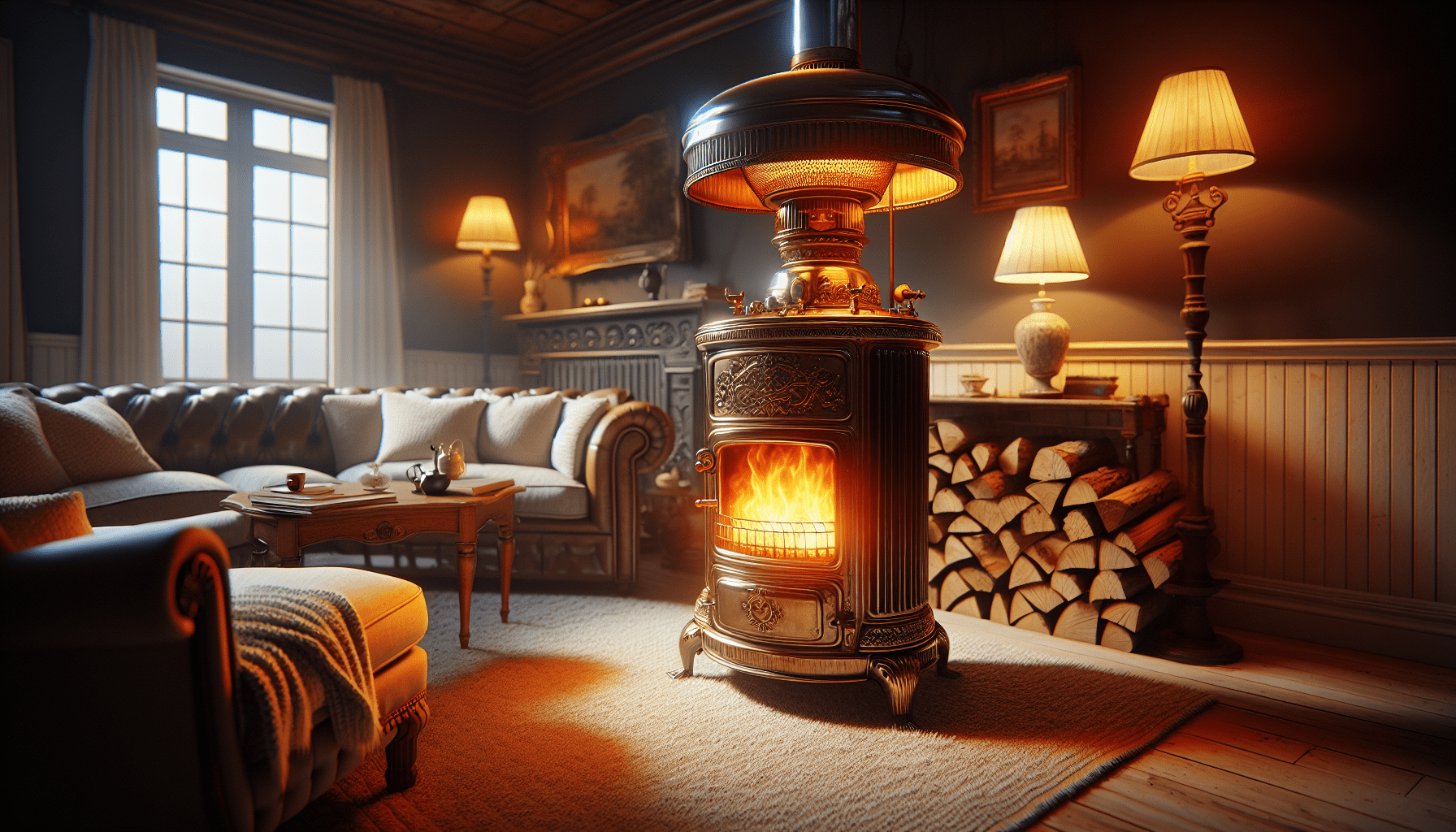
Have you ever wondered about the true costs of maintaining the warmth in your home with a chimney-vented oil heater? It’s a classic choice for many, standing as a reliable companion through harsh winters. Unwrapping the intricacies of its costs includes not just the initial price tag but also operational nuances that impact your wallet over time. Let’s navigate these warmer waters together, ensuring you’re well-informed about both the straightforward and hidden costs.

Understanding Chimney Vented Oil Heaters
Before we plunge into the financial aspects, let’s familiarize ourselves with what chimney-vented oil heaters are all about. These vintage-styled heaters have a certain charm, ideally suited for homes that cherish a traditional ambiance. Not only are they valued for their effectiveness, but they’re also recognized for their seamless integration into pre-existing chimneys—sparing homeowners the hassle of installing entirely new venting systems.
How Do They Work?
In essence, a chimney-vented oil heater operates by burning oil to produce heat. This heat is then distributed across your home, keeping your space snug and warm. Exhaust gases exit through the chimney, ensuring that the indoor environment remains safe and fresh. It’s a noteworthy blend of efficiency and classic design, appealing to those who appreciate both form and function.
Initial Costs of Installation
Equipment and Setup
The journey with a chimney-vented oil heater starts with purchasing the unit itself. Price tags can vary, often resting between $1,500 to $4,000, depending on brand and capacity. Installation costs further add to this initial expenditure, potentially ranging from $2,500 to $5,000. The need for a compatible chimney may necessitate further expenses if modifications are required.
Upgrading Existing Chimneys
If you have an existing chimney that’s been sitting idle or is otherwise unsuitable for modern systems, upgrading it can increase your initial outlay. Chimney liners, essential for safe operation, generally cost between $1,000 and $3,000. It’s crucial to get a professional assessment to ensure your chimney is up to par, facilitating both safety and efficiency.

Regular Operating Expenses
The Cost of Fuel
Oil is the lifeblood of your chimney-vented heater. Depending on your location and market fluctuations, oil prices can vary significantly—typically ranging between $2.50 and $4.00 per gallon. On average, a household may consume 500 to 1,000 gallons per season, which can lead to a seasonal heating cost of anywhere from $1,250 to $4,000. Keeping an eye on oil prices and purchasing during lower-market periods can make a significant difference.
Maintenance Costs
To maintain efficiency and safety, regular maintenance is indispensable. Professional inspections and cleaning of your oil heater and chimney are advisable at least once a year. These services often cost between $150 and $500 annually, a small price to pay for ensuring reliable operation and extended lifespan of your heater.
Electricity Usage
While the primary energy source is oil, your heater may still draw electricity for functions like ignition and air circulation. Although this is far less than that of a fully electric heater, it’s still important to consider these minor additions to your utility bills. Typically, this portion of your expense won’t exceed $50 annually.
Hidden Costs You Should Consider
Flue Cleaning
The chimney demands regular attention beyond the typical maintenance checklist to prevent creosote buildup—a byproduct of burning oil that can become a fire hazard if ignored. Professional flue cleaning, recommended annually, can cost between $100 and $300, depending on the complexity and current condition of your chimney.
Insurance Implications
Some home insurance policies may require additional premiums if you use a chimney-vented oil heater due to the perceived higher risk. Checking with your provider about any necessary adjustments can help avoid surprises. This cost is typically modest but should be factored into your ongoing expenses.
Comparative Analysis with Other Heating Options
Versus Gas Heating
Gas heating units tend to have a lower fuel cost, but require a connection to a gas line, which might not be feasible or inexpensive to install in all areas. Moreover, the charm and ambiance of a chimney-vented system can be quite different from the utilitarian look of a gas system. Choosing between them often boils down to personal preference and existing infrastructure.
Versus Electric Heating
Electric heating systems generally boast lower initial installation costs and require less maintenance. However, they can be more costly operationally, as electricity prices tend to remain higher compared to oil in several regions. Furthermore, during power outages, electric systems fail altogether, whereas oil heaters can function independently.
| Heating Type | Initial Cost | Fuel Cost (Per Season) | Maintenance | Charm Factor |
|---|---|---|---|---|
| Oil Heater | High | Medium to High | Medium | High |
| Gas Heater | Medium | Low | Medium | Medium to Low |
| Electric Heater | Low | High | Low | Low |
Efficiency Improvements and Savings
Investing in a Programmable Thermostat
Integrating a programmable thermostat with your oil heater can optimize fuel usage by ensuring heat is produced only when necessary. This investment, usually around $150, can lead to significant savings over time by reducing wasted energy.
Sealing and Insulating Your Home
A well-insulated home requires far less energy for heating. Make sure your windows, doors, and roof, among other areas, are properly sealed and insulated. Though this can involve an upfront cost, the resultant savings on heating bills can be rewarding.
Sourcing Oil Efficiently
Buying oil in bulk during off-peak times or seeking out wholesale suppliers can shave dollars off your operating costs. Engaging in auto-fill contracts with suppliers can also provide steady pricing, shielding you from market volatilities.
Environmental Impact Considerations
Emissions and Carbon Footprint
While oil heaters are older in design, modern versions have improved significantly in terms of emissions. However, they still contribute to carbon emissions more so than electric alternatives using renewable energy sources. It’s worth considering the overall ecological footprint if sustainability is a priority for you.
Recycling and Disposal
The life expectancy of a chimney-vented oil heater can go as high as 20 years. When the time comes to replace it, proper recycling or disposal of old units is crucial to minimize environmental harm. Engaging with eco-friendly disposal services can sometimes incur an additional cost but serves the broader goal of environmental consciousness.
Conclusion: The Warmth of Understanding
Navigating the various costs of a chimney-vented oil heater is akin to understanding a timeless novel. It requires delving into both the predictable and the nuanced, finding harmony between cost, comfort, and conscience. Whether you’re basking in the radiant warmth this winter jewel provides or mulling over future heating choices, remember that understanding organizes decision-making. This heater’s cozy embrace, paired with your prudent oversight, will wrap you in warmth as the cooler months weave their tales.
